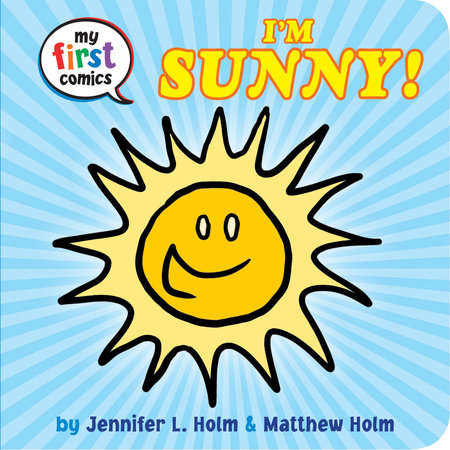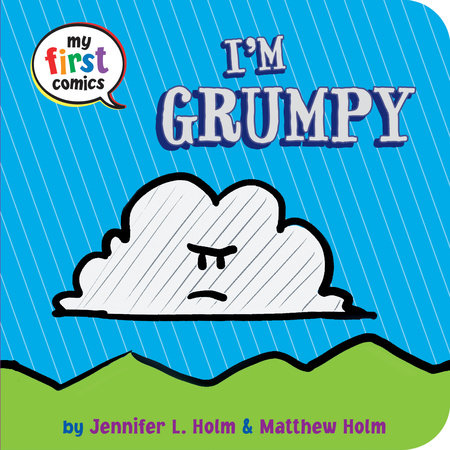Reading Pictures: What Comics Can Teach Young Children
by Jennifer L. Holm
Remember the groovy ’70s? Remember the leisure suits? The avocado-colored refrigerators?
I grew up during those glorious years and fondly look back at them (and the Dorothy Hamil wedge I rocked). But one thing I don’t remember with fondness is the era’s lack of female characters in comics. I grew up in a big family and I had four brothers, so I oftentimes read what the boys were reading — and they were usually devouring comics. But I didn’t see myself reflected in those floppy pages. My eight-year-old self did not connect with big-busted, scantily-clad characters like Wonder Woman. I longed for a comic book character that I — and other young girls — could relate to.

Luckily for me, I have a ridiculously talented “little” – little brother, that is. My brother Matt started drawing comics when he was in elementary school and I have been his biggest fan ever since. After we’d both grown up and were living in New York City, we decided to try to create a comic book that satisfied my longing to see a girl on the page. The result of that collaboration was the Babymouse graphic novel series. Now, ten years and 20 books later, Babymouse has introduced countless young readers to graphic novels. Girls can now see themselves on the comic book page.
When my daughter was in preschool, her teacher asked me to come in and talk about the Babymouse books. I prepared a presentation based on talks I’d previously done at elementary school visits — but I was in for a challenge when I arrived that day and attempted to present to a group of squirmy preschoolers rolling around on the rug. I discovered that trying to teach pre-literate kids about Babymouse was hard because, well, they couldn’t read yet.
That was how my daughter — and her classmates — became a catalyst for Matt’s and my new graphic novel series for young kids, My First Comics. I knew that my daughter desperately wanted to be able to see herself in a comic book that she could understand, so I started thinking about how to communicate very simply, using pictures that this audience could easily recognize. Emotions were the core of everyday life for my pre-K kid — managing and understanding her own feelings, and dealing with other peoples’ emotions too — and I used this as a departure point.
The thing about kids’ emotions is that they change all the time … kind of like the weather. My First Comics is a board book series that uses universal icons — a cloud, a sun, and a tornado — to communicate simple emotional stories to children using a basic comic format. Grumpy, the main character in I’m Grumpy, is a dark, grouchy cloud. Sunny is the bright, enthusiastic sun featured in I’m Sunny. When I show these characters to young children, they instantly recognize what the characters are and how they feel.


At a very basic level, reading pictures is the first step to reading words. Comics do a great job of teaching the building blocks of reading in a visual way. Children can learn inference by studying the pictures. They start to identify and understand complex human emotions based on simple visuals. They learn the basics of dialogue because they can “see” it in a speech bubble. They also learn to navigate left to right on the page.
Now a whole new generation of kids — the littles of our Babymouse readers — will have the opportunity to see and feel themselves on the page. And Matt and I can only hope that when they grow up, they might just bounce right into the Babymouse books that their older siblings are reading…
-
Babymouse #1: Queen of the World!
Also available from:I'm Sunny!
Preorder from:



